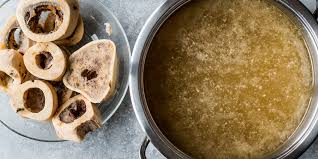
How to tell when jerky is done?
Water purification is vital for health and environmental protection. Learn about health risks, environmental impacts, and methods to ensure safe, clean drinking water.
Jul 31, 2024 | by N Johansson

When considering food and water storage for emergency preparedness, bone broth emerges as a versatile and nutritious option. This guide will delve into the benefits of bone broth, how to source and store it, and its integration into a comprehensive food and water storage plan.
Bone broth is not just a flavorful base for soups and stews; it offers numerous health benefits that make it a valuable addition to any prepper's pantry:
Finding quality bones is crucial for making nutritious bone broth. Knowing where to find bones for bone broth can significantly impact the quality and flavor of your final product:
Proper storage is essential to maintain the quality and safety of bone broth:
Bone broth can be a cornerstone of your emergency food supplies due to its versatility and nutritional benefits:
Bone broth is a valuable addition to any food and water storage plan. Its health benefits, ease of preparation, and versatility make it an excellent choice for preppers. By sourcing quality bones and mastering storage techniques, you can ensure that you have a nutritious and reliable food source ready for any emergency. Whether you're using it as a base for meals or as a standalone drink, bone broth is an asset in any prepper's toolkit.
For more tips on prepping and to learn more about where to find bones for bone broth, visit the rest of our Prepper's Guide. Ensure your pantry is well-stocked with this nutritious and versatile ingredient to enhance your preparedness efforts.